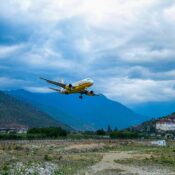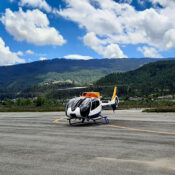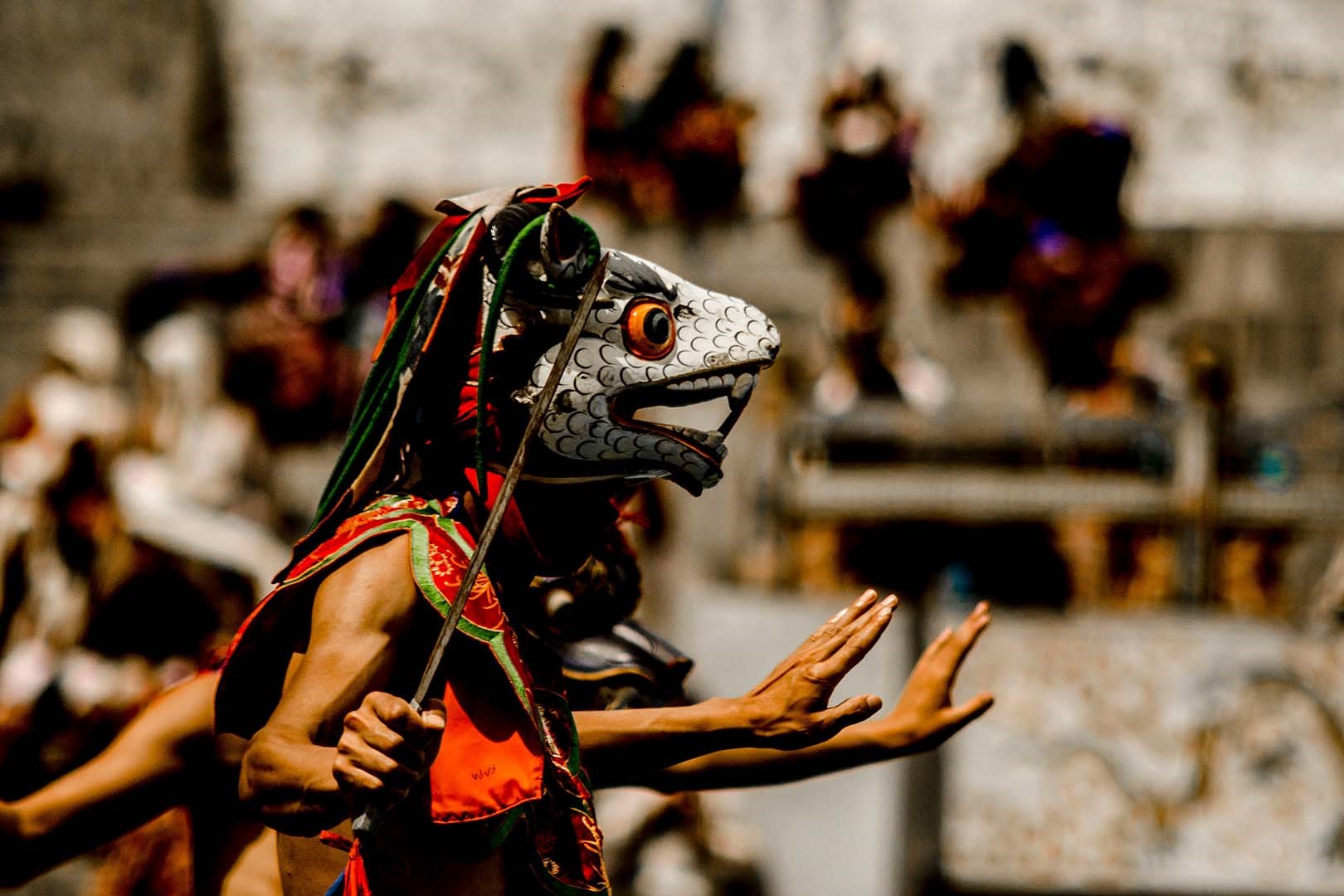Tashi Chhodzong in Thimphu
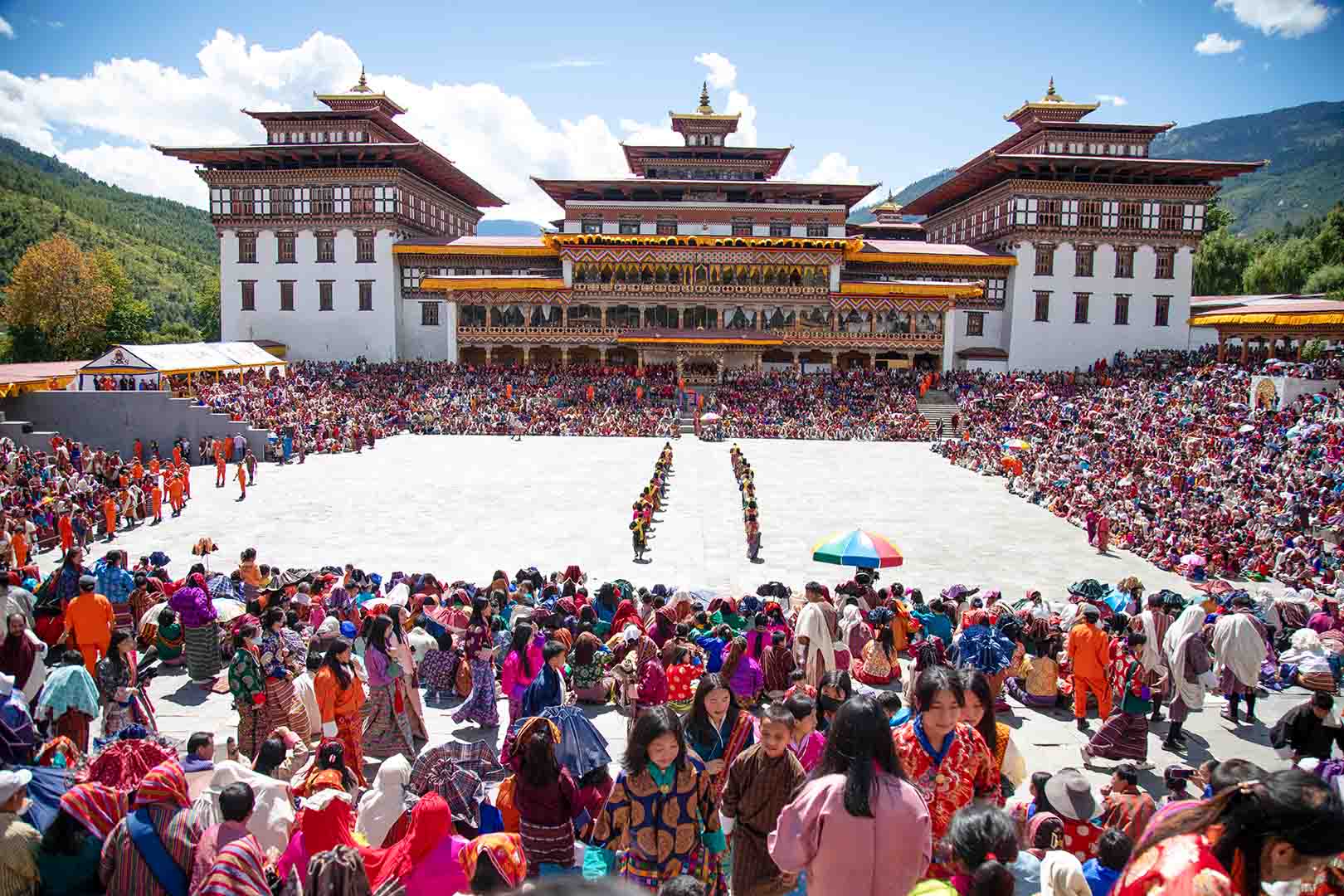
Tashi Chhodzong in Thimphu
Tashichho Dzong (Dzongkha: བཀྲ་ཤིས་ཆོས་རྫོང) is a Buddhist monastery and fortress on the northern edge of the city of Thimphu in Bhutan, on the western bank of the Wang Chu. It has traditionally been the seat of the Druk Desi (or “Deb Raja”), the head of Bhutan’s civil government, an office that has been combined with the kingship since the creation of the monarchy in 1907, and the summer capital of the country. In old British documents, it is known as Tassisudon.
It was built by the first Dharma Raja, who also founded the Lho-Drukpa sect of Buddhism, which has remained the distinctive sect of Bhutan. The correct transliteration of the vernacular name—Bkrashis-chhos-rdzong, meaning “the fortress of auspicious doctrine”—is, according to Graham Sandberg, Tashichhoidzong.
The main structure of the whitewashed building is two-storied with three-storied towers at each of the four corners topped by triple-tiered golden roofs. There is also a large central tower or utse.
Known as “The Fortress of the glorious religion”, Trashicho Dong is an impressive structure that houses the Bhutanese government. It stands on the right bank of the Wangchu (Thimphu) River.
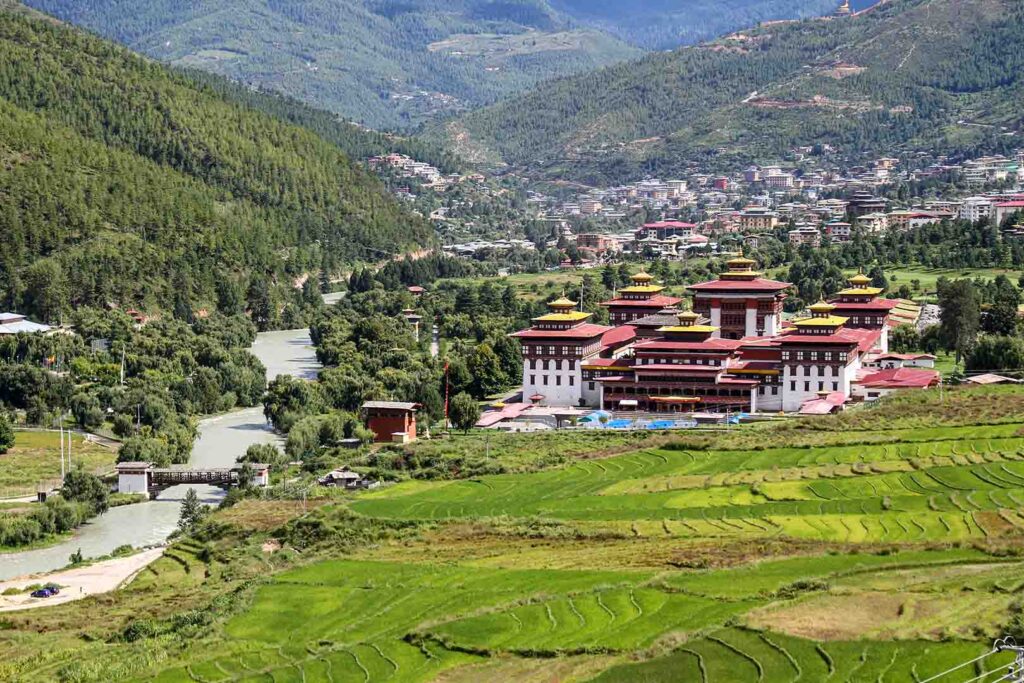
History of TashiChho Dzong
In 1216, Lama Gyalwa Lhanangpa built the Dho-Ngon (blue stone) Dzong on a hill above Thimphu where Dechen-phodrang now stands. When Zhabdrung Ngawang Namgyal came to Bhutan in the 17th century, the followers of Lama Gyalwa Lhanangpa were completely crushed, and the Dho-Ngon Dzong fell into the hands of Zhabdrung. In 1641 Zhab-drung rebuilt the Dho Ngon Dzong and named it Tashicho Dong (Fortress of the auspicious religion). In 1694 it was enlarged by the 4th Desi Tenzin Rabgye.
Phurgyal, during his tenure as the 32nd Desi, added the Di Tsang lhakhang in 1826 and installed many new statues.
In 1869 the Dzong once again caught fire, during the time of the 47th Desi. The Dzong was extensively repaired.
Tashichho Dzong Renovation Work
The overall renovation works were overseen by Zopen Par-pa Yodsel. Seven years later, in 1969, corresponding to the Earth Bird year, the Dzong was consecrated by Je Khenpo (chief Abbot) Thripa Yonten Tharchin, Je Khenpo Thri Zur Thinley Lhendup, and Dorji Lopon Nyizer Tulku.
In 2002 a newly built Neten Chudrug (16 arhats, those who had extinguished all defilements) Thongdrol was consecrated and added to Trashicho Dzong by His Holiness the Je Khenpo. The Thongdrol depicting the Buddha Shakyamuni is surrounded by the 16 arhats. The Thongdrol is unveiled to the public annually on the 15th day of the 4th month of the Bhutanese calendar, coinciding with the Duechen Ngazom (Lord Buddha’s Mahaparinirvana) celebration.
In the past, the National Assembly met within the Dzong.
Today it houses the secretariat, throne room, and offices of the King of Bhutan. The northern portion is the summer resident.
The work of 52nd Desi in building Tashichho Dzong
The 52nd Desi, Kitshelpa Dorji Namgyal, built the Lamai Lhakhang and the Mithrugpa Lhakhang. He also installed a statue of Mithrugpa (Akshobya), facing west.
The Guru Lhakhang was built by the Thimphu Dzongpon, Kunzang Thinley, in 1886, under the direction of Karmapa Khachab Dorji. The Lhakhang houses images of Guru Nangsi Zilnon (complete triumph over all illusory appearances, or the great subjugator), the Guru Tshengye (eight manifestations of Guru Padmasambhava) and the Gongdue Lhatshog (images of Abhipraya Samaja).His late Majesty Jigme Dorji Wangchuck took the initiative of renovating the Dzong in 1962. The entire Dzong was rebuilt in traditional fashion, without nails or written plans.
How Tashichho Dzong was distroyed by Fire?
During the reign of the 5th Desi, Gedun Chophel, in 1698, the Dzong caught fire and was restored. The 10th Desi, Mipham Wangpo, built the Kagyu lhakhang inside the Tashicho Dzong. In 1747 the Dong was enlarged at the initiative of the 13th Desi, Chogyal Sherab Wangchuk.
During the reign of the 16th Desi, Sonam Lhendup, and the 13th Je Khenpo, Yonten Thaye, the Dzong caught fire for a second time. The two then proposed to move it from Dhechenphodrang and build a new Dzong at the site of its current location. In 1777, during the time of the 18th Desi, Jigme Singye, the Kunrey (assembly hall of the monks) in the Dzong was renovated, as it was totally dark inside. It was further renovated by the 25th Desi, Pema Cheda, in 1807.
How Tashichho Dzong was distroyed by Fire?
Lama Gyalwa Lhanangpa. Tashichho Dzong was first constructed in 1216 A.D. by Lama Gyalwa Lhanangpa where Dechen Phodrang now stands above Thimphu. The Dzong was originally known as Dho-Ngon (Blue Stone) Dzong
Who introduced dzong in Bhutan?
Simtokha Dzong was the first dzong to be constructed by Zhabdrung Ngawang Namgyal, the greatest builder of Dzongs in Bhutan who undertook the construction of six Dzongs to consolidate his newly acquired domain in western Bhutan and to defend himself from both the internal foes and external enemies.


